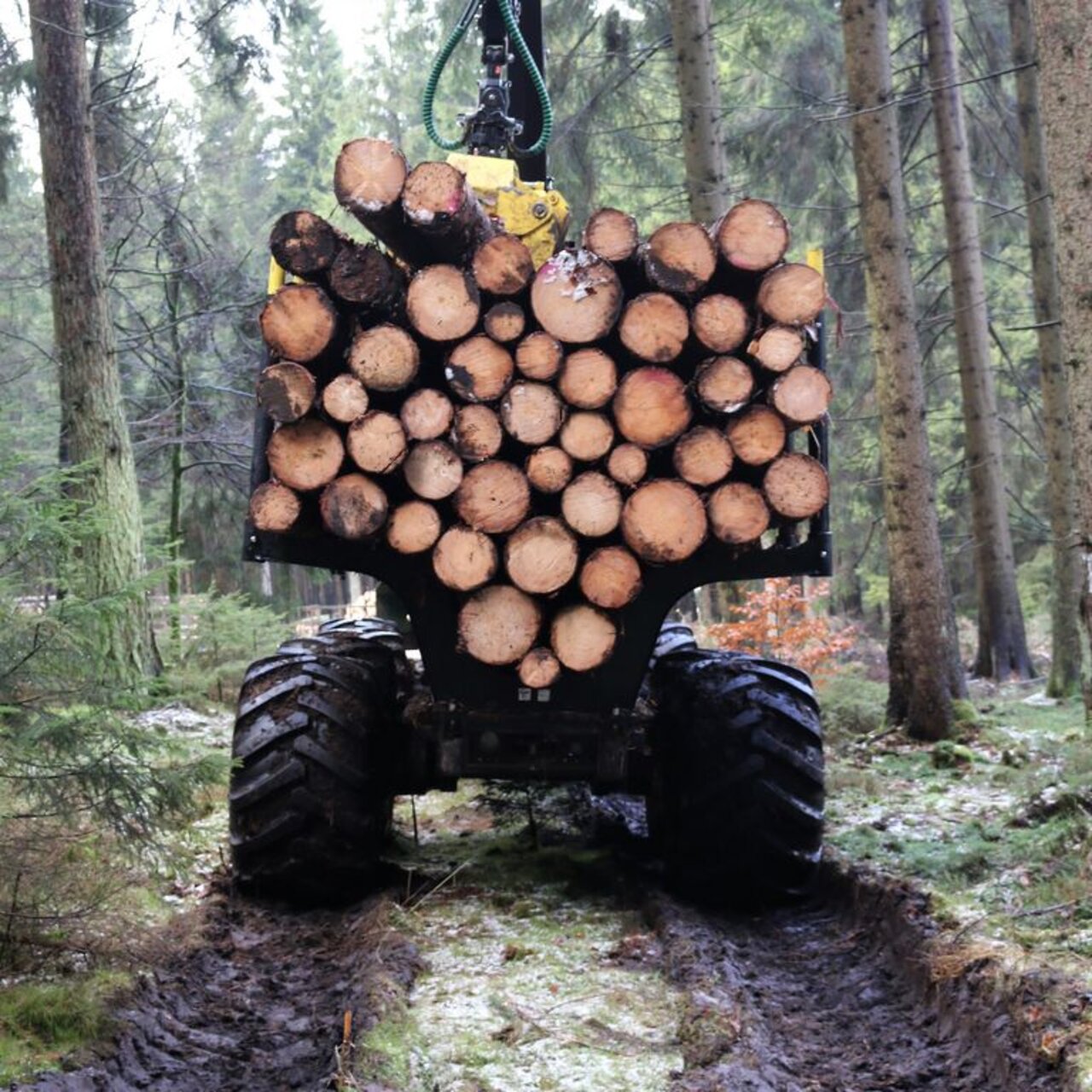Project
Soil protection in highly mechanized timber harvest

Joint project: investigation and assessment of soil functions and derivation of solution strategies for a soil-protective timber harvest; Subproject 2: soil physical data and measuring sensors
In modern highly mechanized timber harvesting, vehicle mass has been steadily increasing for decades. Heavy vehicles increase the performance of logging and make it possible to meet the growing demand for wood. Due to the increasing days of use, however, unfavorable soil conditions can impair soil functions.
How does this affect, and what are the solution strategies for a soil-conserving timber harvest?
Background and Objective
The heavier the machines used in the forest, the more they stress the forest ecosystem. The direct interaction between the vehicle and the ground can change the functionality of the soil / soil functions. In order to assess this, a combined consideration of soil physical and soil biological indicators is required, which the Thünen Institute of Agricultural Technology compiles and evaluates in cooperation with the Northwest German Forestry Research Institute (NW-FVA) and the Niedersächsisches Forstplanungsamt (NFP). The parameters are set in relation to the key indicator "lane depth" because the lane depth can be visually and thus easily raised for the driver. From the cause-effect chain "driving - soil properties - soil functions", ecological guard rails can finally be derived as decision-making aid for practical applications. The findings will also be integrated into a future concept, from which a prognosis model for the driveability of forest soils will be created. Meteorological data should also be included in this hazard map for the trafficability of forest soils.
In addition, the development of a limit value transmitter is driven forward to avoid costly hand measurements and to support the workflow during the cutting operations.
Target Group
Science and research, forest and soil research community, forestry enterprises and associations, forestry consultants, education, politics.
Approach
- Selection of spruce stands on stress-sensitive soils for investigations
- Assessment of the relevant soil physical properties (water content, dry bulk density, pore and particle size distribution, hydraulic conductivity, penetration resistance) of existing skid trails before and after renewed timber harvest through forest soil and laboratory investigations
- Mapping of the morphological characteristics of the skid trails, esp. the driving lane depth, before and after re-driving with forestry vehicles
- Use of the hydrostatic settlement measurement developed by the Thünen Institute for determining the settlement of soil caused by driving on the skid trails with a field-used harvester and a forwarder
- Integrated consideration of soil physical (Thünen Institute), soil biological and soil chemical parameters (both by the NW-FVA) to determine the effects of the approach on the forest floor ecosystem
- Linking the findings with the parameter "lane depth" and deriving ecological guard rails.
- Issue of recommendations for action regarding the drivability of forest soils in the sense of a soil-conserving timber harvest
- Further development of the hazard map of forest soils
- Development of a future concept for the location- and weather-sensitive prediction of the risk of traffic
- Parallel: Further development of the prototype-level limit switch for the indication of exceedances of a critical lane depth
Our Research Questions
- Is there a connection between soil-functional properties and the morphological characteristics of the lane, and can critical driving lane depths set as a guideline?
- When can a detected change of state be interpreted as ecological damage? What is the tolerable level of soil degradation from an ecological point of view?
- How can the parameter lane depth be integrated into existing risk concepts for the practicability of forest soils and what are the possibilities of regionalization?
- Can a track depth sensor be developed that reliably replaces the hand measurement of the driving lane under practical conditions?
Thünen-Contact

Involved Thünen-Partners
Involved external Thünen-Partners
- Nordwestdeutsche Forstliche Versuchsanstalt (NW-FVA)
(Göttingen, Hann. Münden, Deutschland) - Niedersächsische Landesforsten
(Wolfenbüttel, Oerrel, Deutschland)
Funding Body
-
Fachagentur Nachwachsende Rohstoffe e.V. (FNR)
(national, öffentlich)
Duration
6.2017 - 8.2022
More Information
Project funding number: 22014616
Funding program: FNR
Project status:
finished

![[Translate to English:] [Translate to English:]](/media/_processed_/3/6/csm_Hintergrund-Ausschnitt1_9daaef6b89.jpeg)
![[Translate to English:] [Translate to English:]](/media/_processed_/3/6/csm_Hintergrund-Ausschnitt1_0bd7111163.jpeg)





